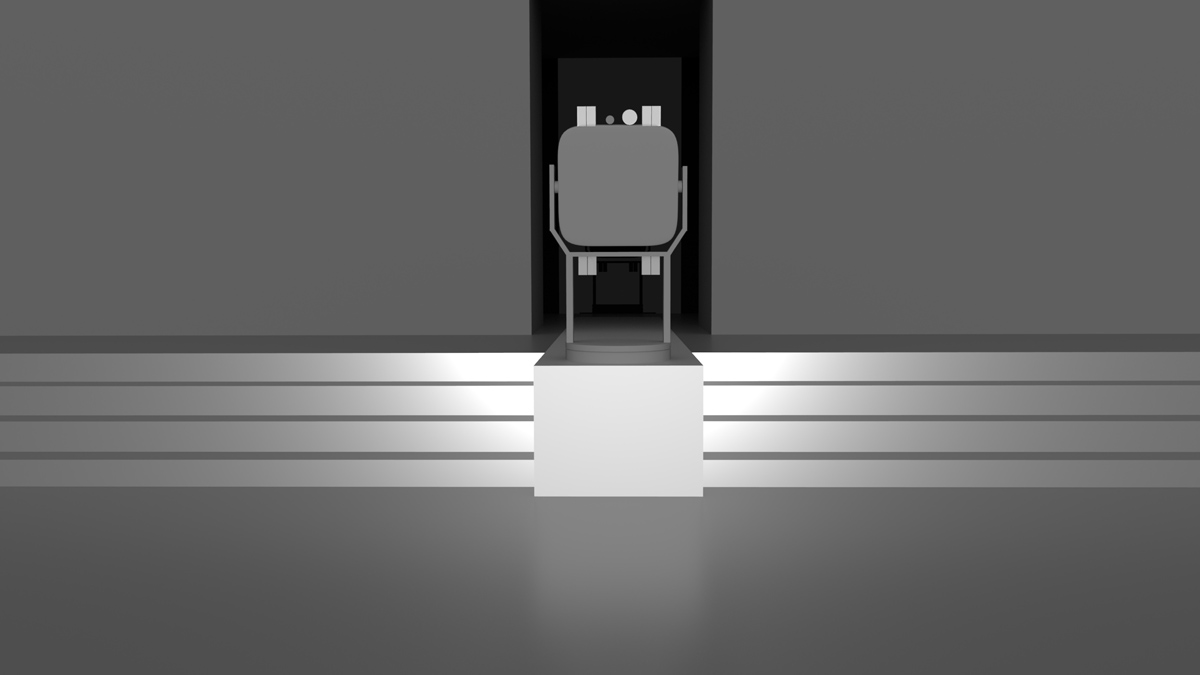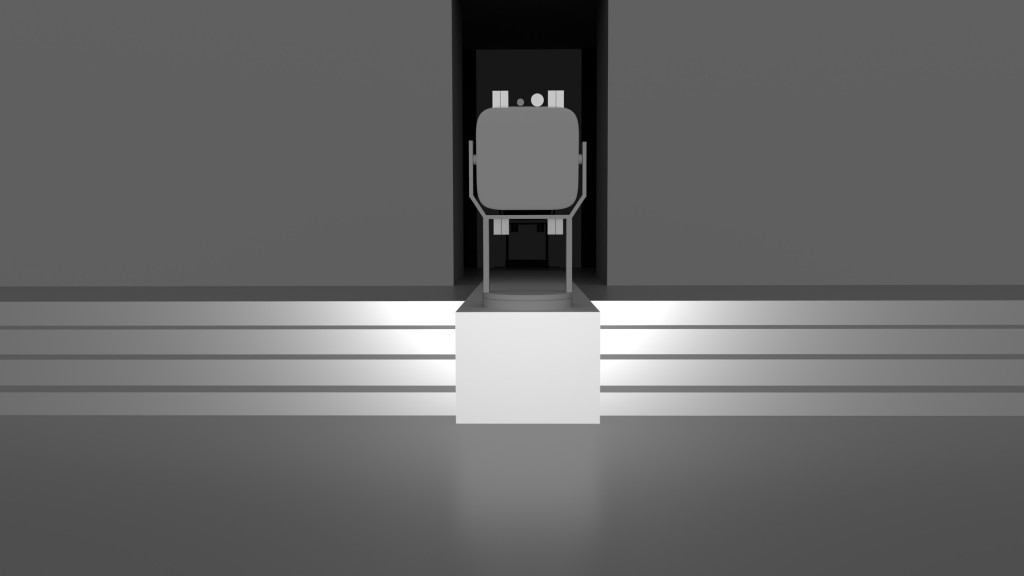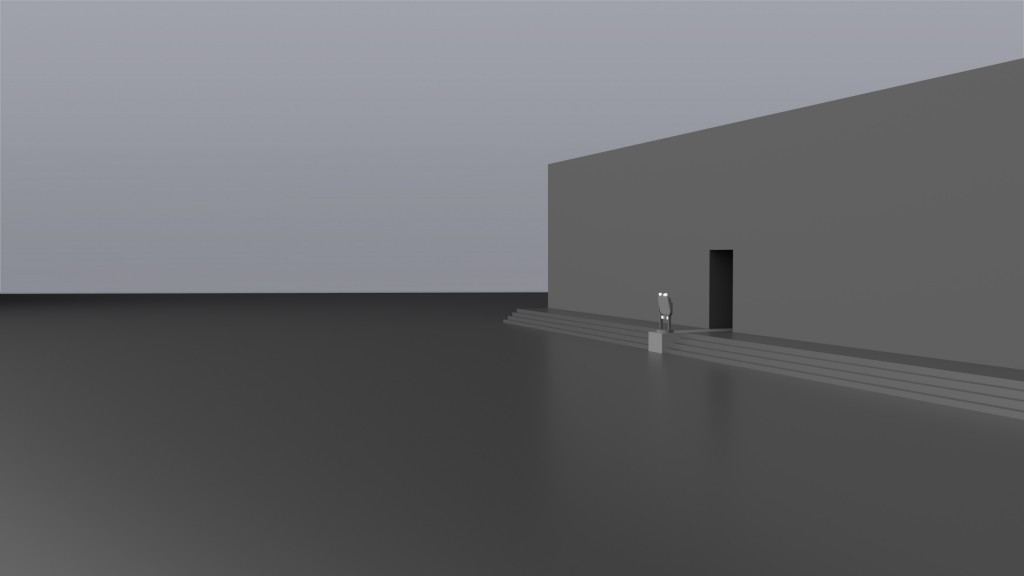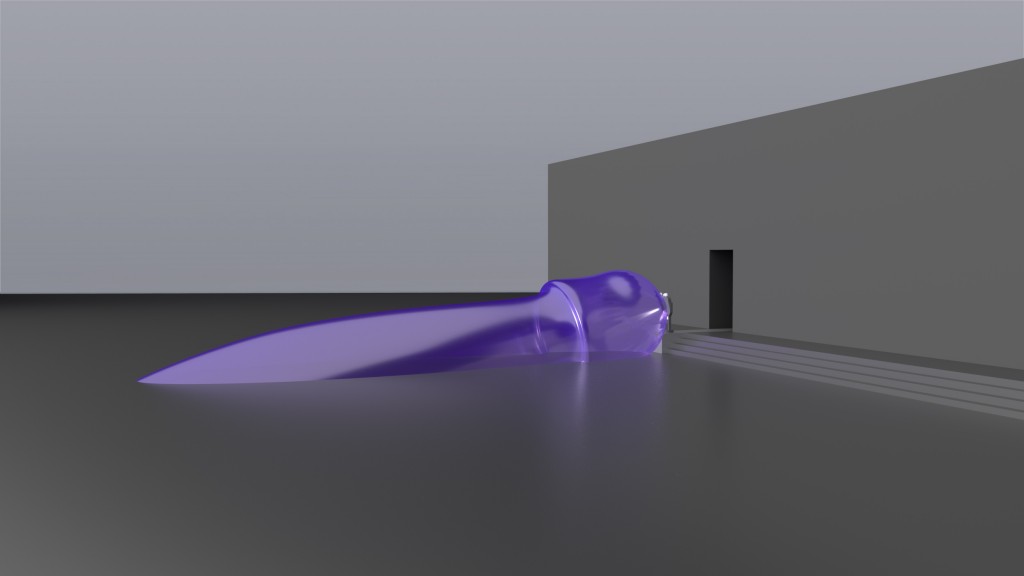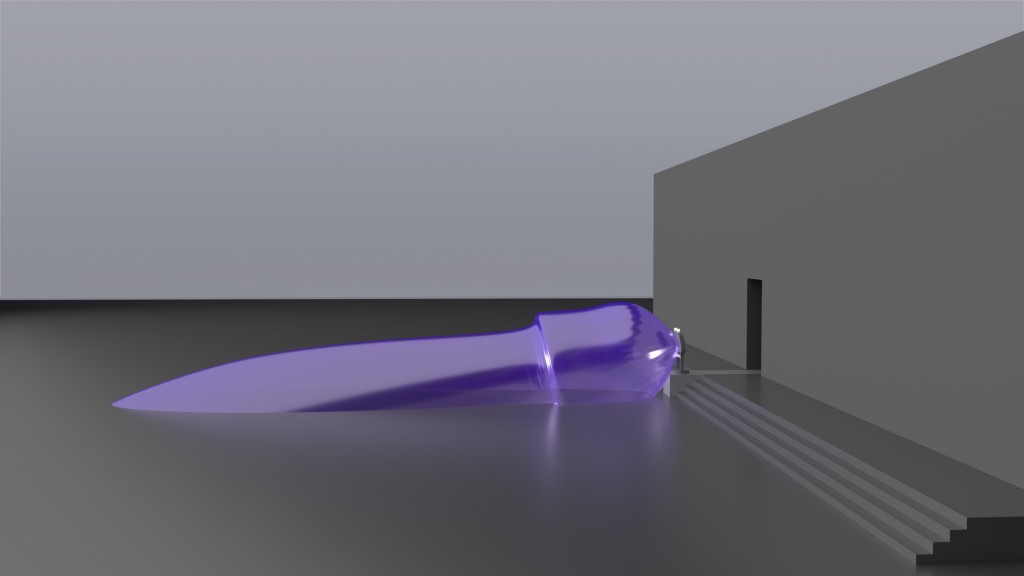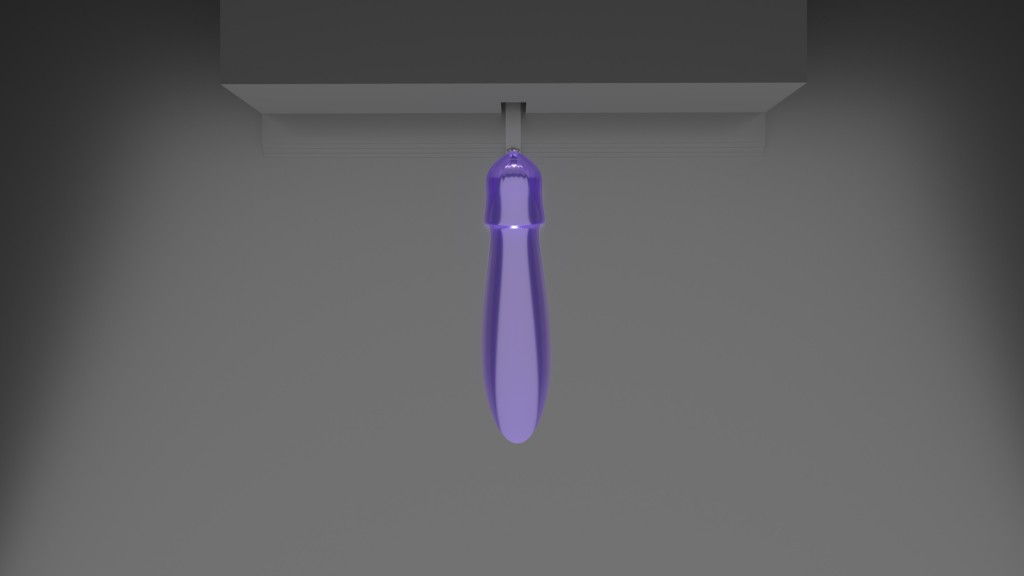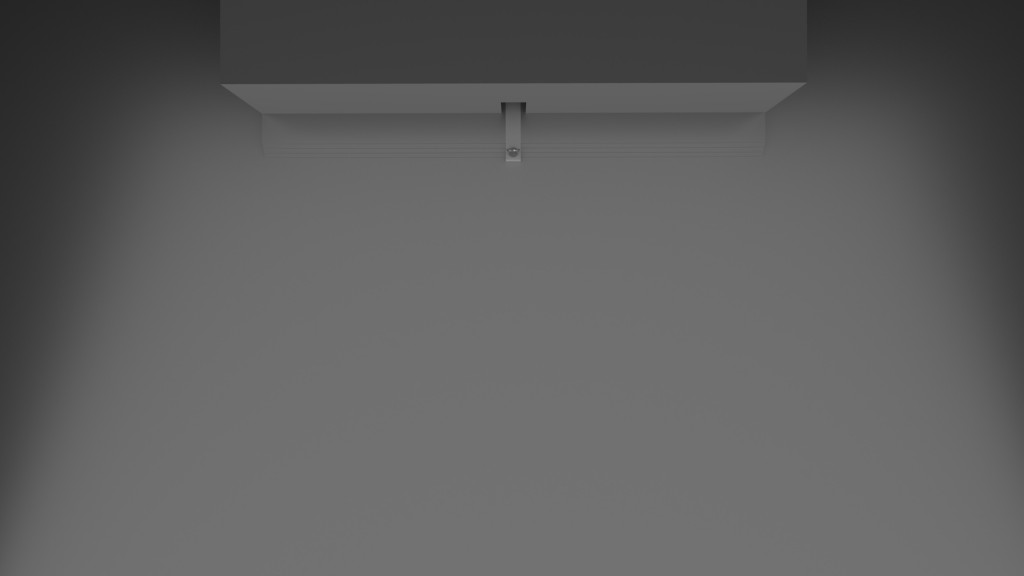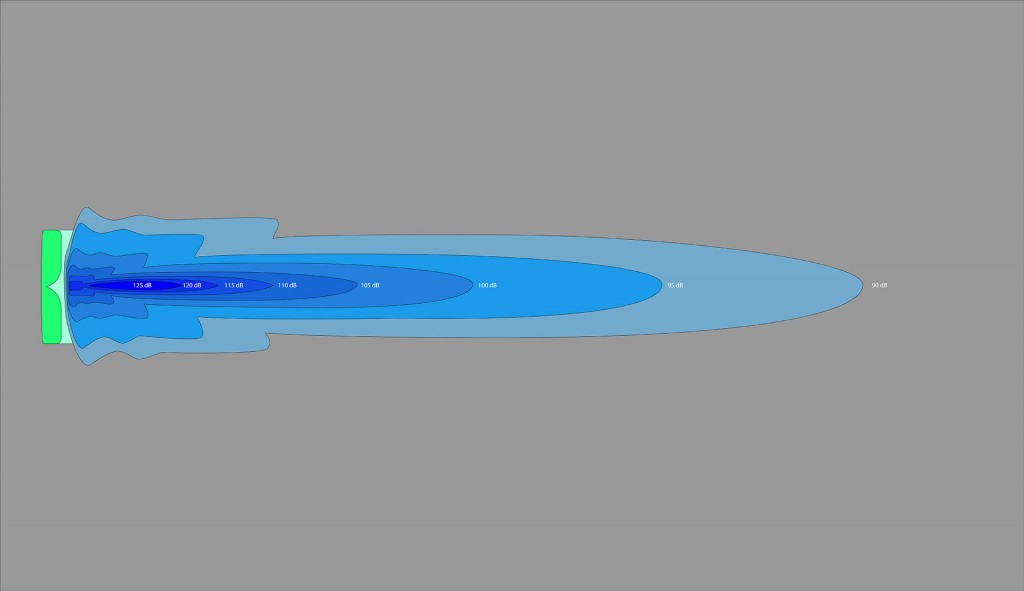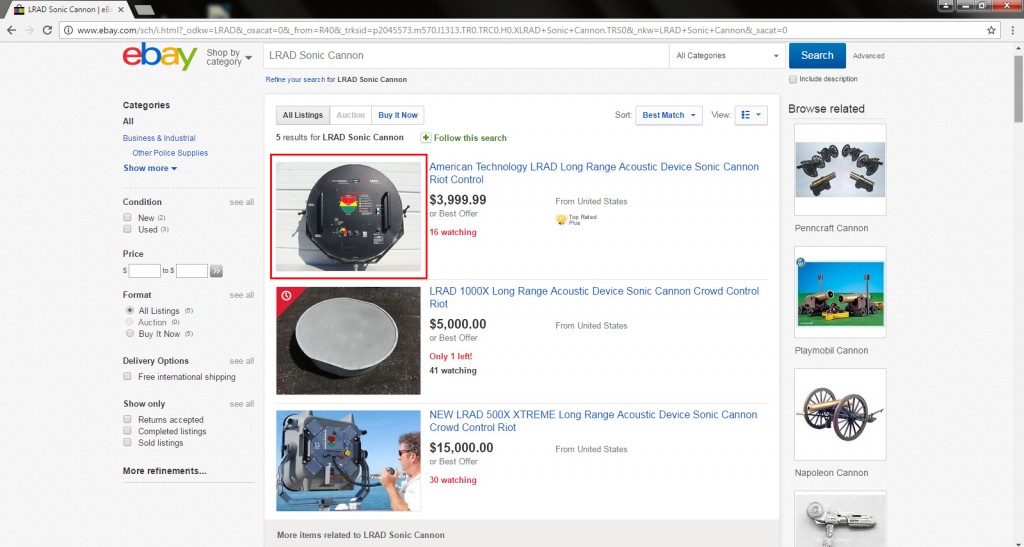FORTRESS (2016)
Roch Forowicz & Katarzyna Boratyn
EN
LRAD (Long Range Acoustic Device) is a device used for crowd pacification. It emits a directional sound wave of high frequency and loudness. Although the initial purpose of the device was to deter pirate attacks on ships, it soon proved effective as a tool to disperse public gatherings by the police. Its application has been the source of many controversies from the very beginning, and the device has thus not been accepted for use.
Whenever a highly targeted LRAD acoustic wave is emitted, the affected person at first experiences loud noise. With every step towards the source of the sound, all senses, in particular hearing, become increasingly muted. Eventually, motor abilities of the person affected by LRAD are blocked by the deafening signal. The victim is dehumanized and reduced to a binary sense of threat, deprived of his or her complexity and brought down to the mere awareness of imminent danger. The unseen consequence of that act of domination is its arbitrary nature which is not always understandable from a perspective other than one?s own experience.
Roch Forowicz will use the sonic cannon to create an unbreakable sound barrier. Instead of the typical high-pitched signal, the device will be emitting the sound of ocean waves. It is the sound that has recently gained a new meaning due to the images of dinghies packed with people trying to get to Europe, which were recurring in the mass media in the last several months. For those people, the sea is a route to a better world and at the same time a barrier that poses mortal danger. Visitors in the art exhibition place will be put in an uncomfortable but exceptional sensory situation where all their senses are exposed to intense feelings of disorientation, inertia, helplessness and lack of guaranteed respect for fundamental rights. As the rhetoric refers to common issues, visitors will be able to reflect on the future directions of domination and on the contrast between the notions of a human being and illegal.
PROJECT SCENARIO
The project by Roch Forowicz involves LRAD (Long Range Acoustic Device), a device used for crowd pacification by law enforcement forces. Although Polish police have LRAD, legal regulations forbid them to use it in their operations. Nevertheless, the artist witnessed a situation where LRAD was used to police a manifestation in Warsaw. For Roch Forowicz, the sonic cannon was of natural interest due to his long-established focus on panoptic mechanisms and to his hacktivism with regard to monitoring systems.
Under the project, the sonic cannon will be used to generate an unbreakable sound barrier. Visitors of the festival will be put in an uncomfortable but exceptional sensory situation, both overwhelming and disorienting. The cannon will prevent them from entering the building.
The artist will purchase LRAD-500X, mount it on a steel rack (120 cm) outside the entrance to one of the festival buildings. The external door to the room will remain open.
The loudspeaker will be launched by the motion caused by visitors (motion detection system). Sound intensity will be gradually growing for 10 seconds. After the launch of the loudspeaker, the directional stream of sound will begin to „penetrate” the space in front of the entrance to the building and the speakers will be directed at the visitors. LRAD will be directed downwards (about 10 degrees) so that the sound stream hits the ground, which would limit the dispersion of the sound wave.
The emitted sound will be ocean waves, recorded in the region with the highest inflow of refugees from the ongoing humanitarian crisis, and adequately prepared for the LRAD emission in cooperation with a professional soundman.
The volume used during the exhibition will be set so as to evoke uncomfortable sensations within the radius of 5 meters from the entrance to the building. This extreme s experience is the key component of the project. It both creates and allows for recognition of the actual context of the exhibition. The installation will be calibrated in such a way so as not to harm the visitors health.
Acoustic consultations: Barbara Okoń-Makowska, Ph.D., Tadeusz Fidecki, Ph.D. Eng. (The Fryderyk Chopin University of Music in Warsaw).
Many Thanks to Katarzyna Boratyn and Barbara Okoń-Makowska, Tadeusz Fidecki.
PL
TWIERDZA (2016)
Roch Forowicz i Katarzyna Boratyn
Projekt wystawy w Polskim Pawilonie na 57. Międzynarodowej Wystawie Sztuki w Wenecji
LRAD (ang. Long Range Acoustic Device – urządzenie dźwiękowe dalekiego zasięgu) to narzędzie, służące do pacyfikacji tłumu przez siły dyscyplinarne. Jego działanie opiera się na emisji ukierunkowanej fali dźwiękowej o wysokiej częstotliwości i głośności. Początkowo urządzenie miało być używane na okrętach w celu ochrony przed atakami piratów, ale okazało się, że może być również używane do rozpraszania zgromadzeń przez policję. Działko akustyczne zostanie wykorzystane do stworzenia nieprzenikalnej bariery dźwiękowej. Emitowanym dźwiękiem nie będzie typowy dla tego narzędzia sygnał wysoko-tonowy lecz szum fal morskich. To dźwięk, który w ostatnim czasie nowego znaczenia, wywołanego obrazami, jakie dominowały media masowe przez kilkanaście ostatnich miesięcy (rok 2016): stłoczeni na pontonach ludzie, usiłujący przedostać się do Europy. Morze to dla nich droga do lepszego świata i równocześnie stanowiąca śmiertelne zagrożenie bariera. Widzowie odwiedzający Polski Pawilon w Wenecji zostaną postawieni w niekomfortowej, ale wyjątkowej sytuacji percepcyjnej, w której zmysły odbiorcy są narażone na intensywne doznania: dezorientacji, bezwładności, bezsilności i poczucia braku gwarancji podstawowych praw. Dzięki retoryce odwołującej się do tego, co powszechne, możliwa stanie się refleksja nad kierunkami dominacji i zderzeniem pojęć „człowiek” i „nielegalny”.
Podziękowania dla Katarzyny Boratyn i Barbary Okoń-Makowskiej, oraz dla Tadeusza Fideckiego.
